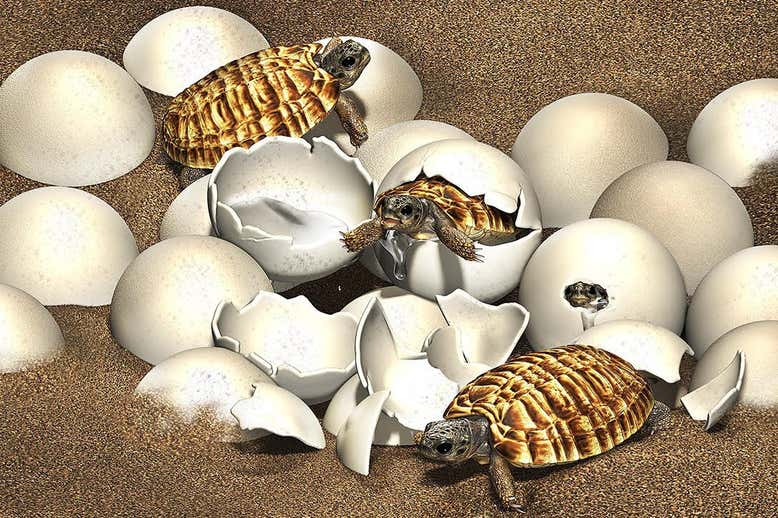Some 90 million years ago, when dinosaurs were still roaming the land, a turtle laid eggs. We’re not sure what happened with most of them, but one never hatched. Now, researchers have found and analyzed that egg.

In 2018, a farmer discovered the egg and donated it to researchers. The finding came from what is today China, and based on its size, the turtle must have been about as big as a human — or even larger.
Fossilized eggs are, in general, very rare. Fossilization tends to require specific conditions, and soft eggs normally don’t withstand the processes. But this was a fortunate exception. The dinosaur came from Neixiang county, which is well-known for its dinosaur eggs. Initially, that’s exactly what researchers thought they were dealing with.
The egg, about as big as a billiard ball, was unlike any other dinosaur egg researchers had seen. But when paleontologists Fenglu Han and Haishui Jiang took a closer look at it, they realized that not only it wasn’t a dinosaur egg, but it also had a surprise inside: an embryo.
If turtle egg fossils are rare, the odds of such fossils being preserved with an embryo inside are astronomic. With the help of the embryo, which was imaged inside the egg, the team was able to identify the fossil.

The team used micro-computed tomography (CT) and initially found a mixed jumble of tiny bones inside. They then created a 3D replica of each individual bone and then put it all together. Remarkably, the embryo turned out very similar to what can be seen in today’s turtles. It was about 85% formed, the researchers say; it may have tried to hatch, but failed. Two other eggs from the same species and the same period have suffered the same fate.
Perhaps even more striking is the shell of the egg. At two millimeters thick, this is some 4 times thicker than even the thickest turtle eggs that are produced today. This shell would have allowed water to seep through, so these ancient turtles likely buried the eggs inside the cold, moist soil, keeping them safe from the arid environment of the late Cretaceous (and any predators that would wander about).
Unfortunately for this species, while most turtles managed to survive the extinction that wiped out the dinosaurs, the thick-egged turtles didn’t make it — and this type of thick eggs was never again seen for turtles.
In fact, it may be possible that the egg itself was what brought the demise of the species, or it could be that these specialized turtles couldn’t adapt to the dramatic shifts ushered in by the Cretaceous extinction. More research is needed before we can figure out what happened.
The study was published in the journal Proceedings of the Royal Society B: Biological Sciences.









